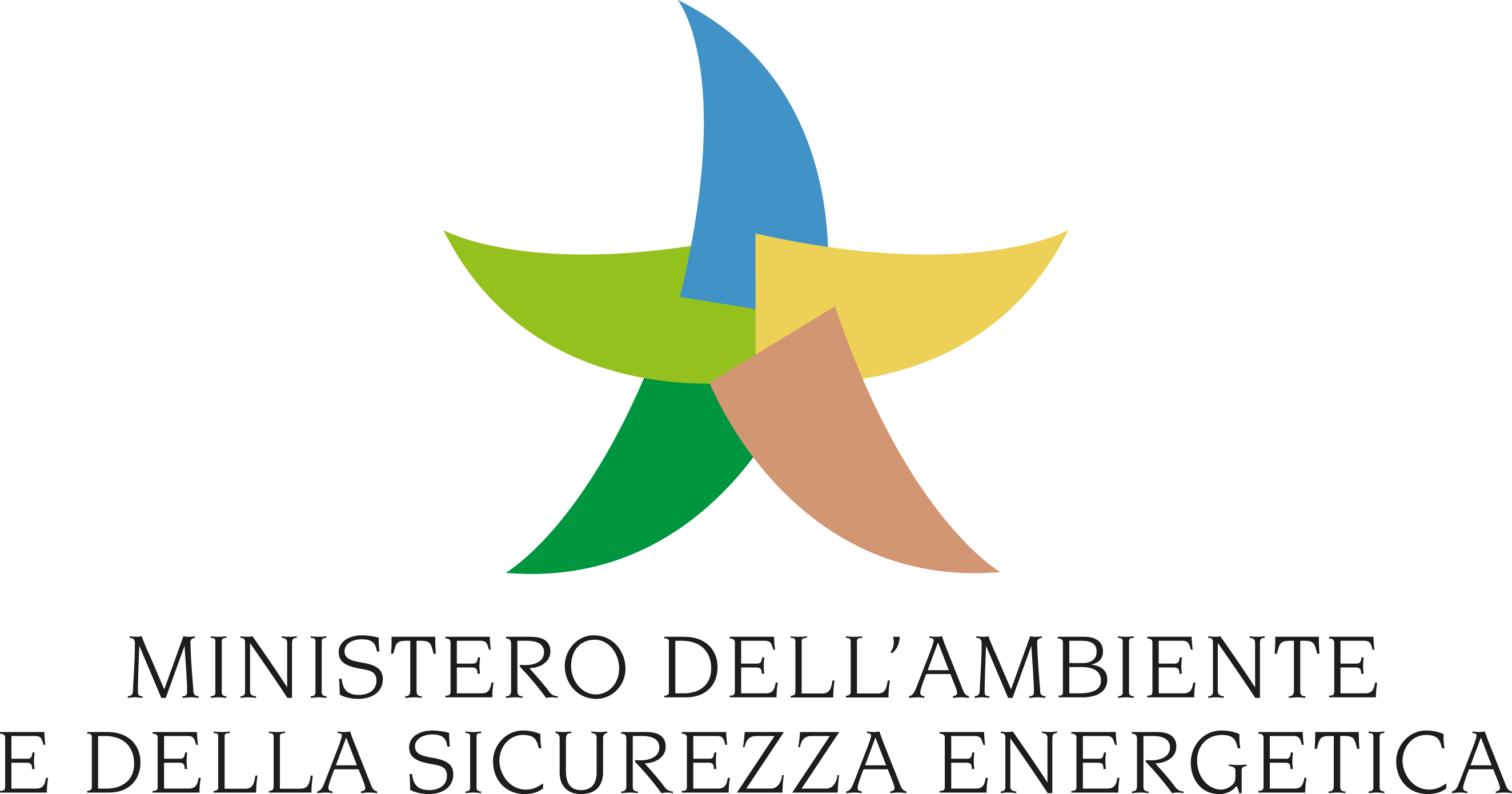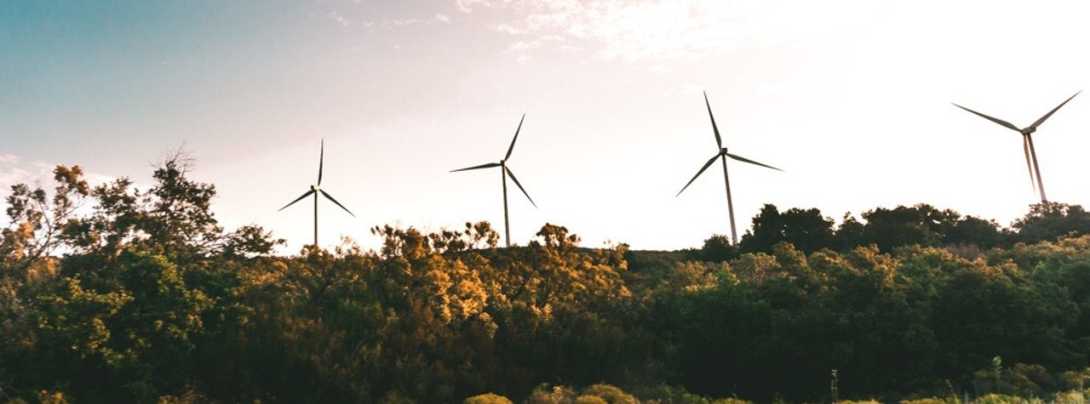
The water sector is energy-hungry, with energy consumption by the sector equivalent to all the energy used by Australia. In 2014, around 4% of global electricity consumption was used to extract, distribute, and treat water and wastewater as well as 50 million tons of oil equivalent of thermal energy.
By 2040, the amount of energy used in the water sector is likely to double due to trends including increased desalination, large-scale water transfers, and increasing demand for wastewater treatment, as well as higher levels of treatment.
The energy used to supply water and clean used water is responsible for around 3–8% of global greenhouse gas emissions. With global demand for water projected to increase by 55% by 2050, a business-as-usual scenario will see emissions increasing by 50% in the same timeframe.
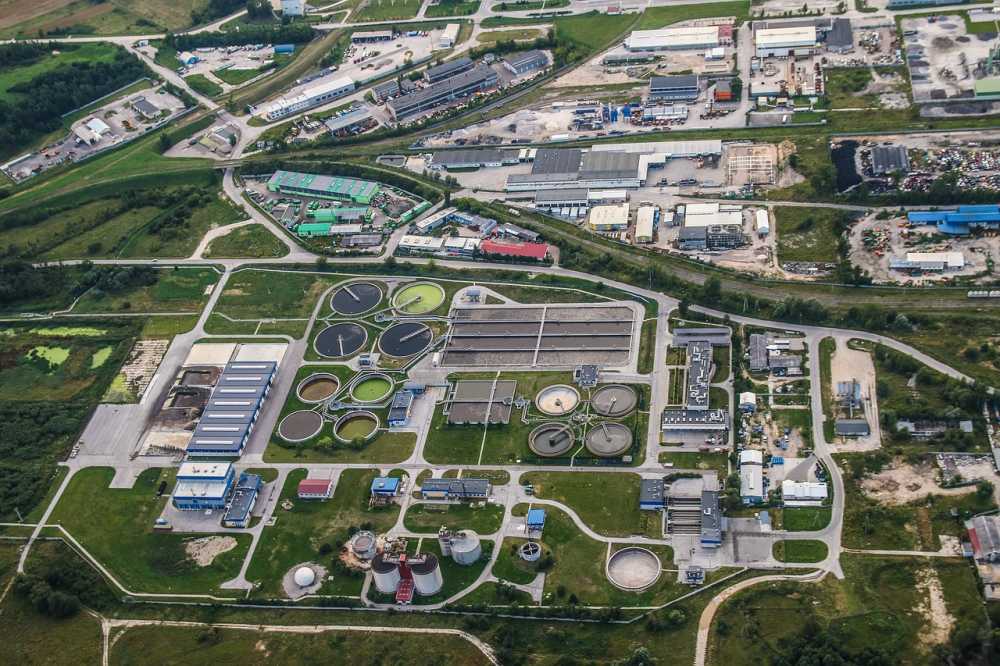
Image by Michal Jarmoluk from Pixabay
Decoupling Emissions from GDP Growth
As part of the San Diego’s Climate Action Plan, which calls for clean and renewable energy to be generated via a combination of on-site and large-scale renewables, San Diego’s Public Utilities Department has a forward-thinking renewable energy program that generates more renewable energy from water and wastewater than any other San Diego Gas & Electric customer. In addition to reducing water-energy-climate nexus challenges, the program has contributed towards the city’s 21% reduction in greenhouse gas emissions compared to the 2010 baseline (at the same time GDP growth has increased by 35%).
Utilizing Methane
One of the by-products of the wastewater treatment process at Point Loma Wastewater Treatment Plant is methane gas. The gas is used to fuel two continuously running generators that can each produce up to 2,235 kilowatts of electricity. A diesel-powered generator can also burn methane and produce an additional 1,220 kilowatts as a peaking generator. By utilizing the methane gas, it means the site is energy self-sufficient, with excess power generated sold back to the grid.
At the Metropolitan Biosolids Center, which produces dewatered biosolids that are around 30% solids and 70% water, methane produced by the digesters and from the adjacent Miramar Landfill is converted to electricity, which is used to run the facility. Thermal energy produced by the generators is used to heat the plant, as well as for air conditioning of the center.
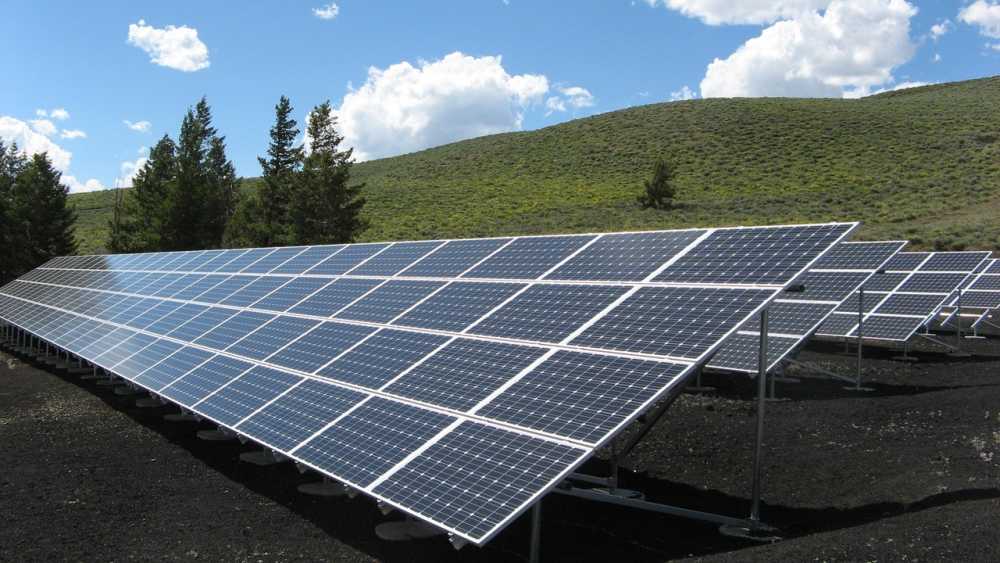
Image from Pixabay
The Sun’s Power
At three Public Utilities Facilities, solar photovoltaic systems have been installed:
- Alvarado Wastewater Treatment Plant has installed a 1.1-megawatt system, producing 1.4 million kilowatt-hours annually
- Metropolitan Operations Center III has installed a 30 kilowatt (AC) rooftop solar system that produces 45,000 kilowatt-hours annually
- Otay Water Treatment Plant has an 804 kilowatt (AC) system that produces 1.5 million kilowatt-hours annually
The Takeaway
Water utilities have multiple renewable energy options available to reduce water-energy-climate nexus pressures.
About the Author
Robert is the author of Urban Water Security (Wiley), The Green Economy and the Water-Energy-Food Nexus (Palgrave Macmillan), Blue and Green Cities: The Role of Blue-Green Infrastructure in Managing Urban Water Resources (Palgrave Macmillan), Natural Resource Management and the Circular Economy (Palgrave Macmillan), and Climate Resilient Water Resources Management (Palgrave Macmillan).
He is the editor of the Climate Resilient Societies book series with Palgrave Macmillan. Robert is a contributing author for the World Bank's Water Blog, Asian Development Bank's Blog, United Nations Industrial Development Organization's Making It Magazine, and Green Growth Knowledge Platform. He has published widely on water security, water resources management, and related issues, and has conducted field research around the world, including Antarctica. He is Founder of Mitidaption, Mark and Focus, and Our Future Water.

New York, NY - When I arrived at the United Nations, I felt at home; I entered with my Colombian passport and it was natural to be from somewhere other than the United States. My accent was well received and I learned that Spanish is one of the five official languages of the United Nations.
I was at the first-ever Youth Climate Summit as part of the Connect4Climate #YouthTakeover team. My background has nothing to do with the environment, climate, or global warming. I am not involved in any kind of activist program fighting climate change. And yet, I felt like I belonged.
The summit purposely focused on the actions everyone can take to fight climate change. I had always thought one needed to be an activist, politician, scientist or someone like that to fight against or talk about climate change. The summit taught me that everyone has a part to play.
Whether your passion is sports, fashion, culinary arts, technology or business, whether you study film or are a social media influencer, you can take action to fight climate change through your individual interests and unique career path.
My passion is sports, so I was thrilled to learn how the sports community can help combat climate change. Danni Washington, moderator of the SDG Media Zone and the first African-American woman to host an American Science TV Show, told me about the different ways fans, sporting events committees, and athletes can contribute to climate action.
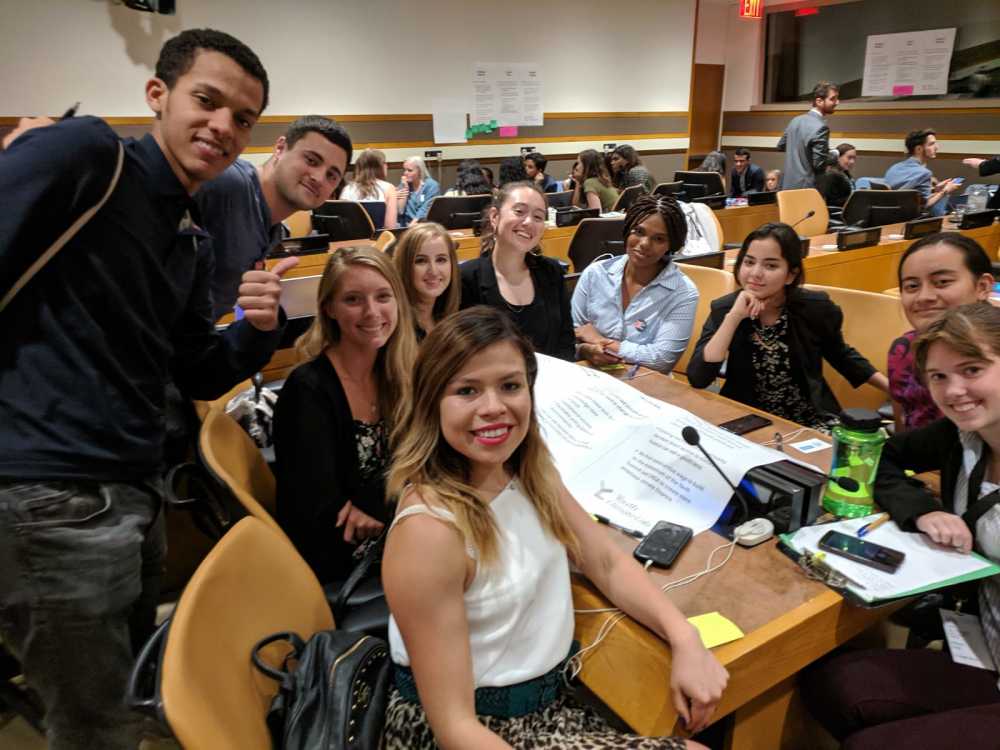
Athletes have a lot of influence among their fans. “There are so many fans around the world from so many sports. [Athletes] can use their platform to educate people and help them understand what climate change is really about,” Washington said. “They can give the general public the resources, the information, and the tools they need to make better decisions for our world.”
Hannah Mills, a two-time Olympic sailing champion, is using her platform to take climate action and influence other athletes, fans and sport-lovers to do the same. Mills shared at the summit her campaign “Big Plastic Pledge,” which calls on fans and athletes to get involved by making at least three pledges of a possible nine listed on the campaign website. She is on a mission to eliminate plastic from stadiums and sporting events.
I had already pledged to use my own water bottle and to say no to single-use plastic shopping bags. It’s better to make small and imperfect changes than to take no action at all.
I practice CrossFit and know that other athletes change their diets according to their individual goals, sometimes by adding more carbs or by drinking more water. If we athletes can change our exercise regimens and diets to perform and look better, we can make small and consistent shifts in our lifestyle to help our planet.
“Our planet is going through different changes because of our behavior and it’s time that we humans recognize our role in the planet and do something to fix it,” Washington told me.
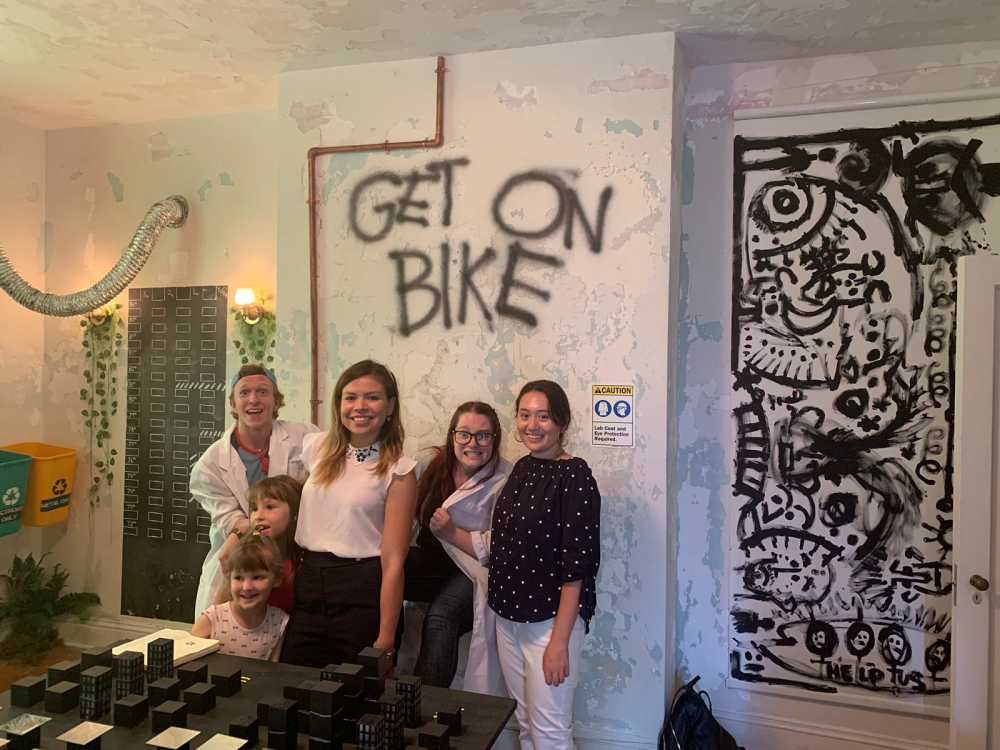
My role as a sportsperson and journalist is to hold those sports committees and athletes who have pledged to help the environment accountable to their commitments and to keep reporting on how the sports community can contribute to solving this issue that affects all of us.
During one panel at the SDG Media Zone, two models from my native Colombia, Toya Montoya and Laura Tobon, spoke about the actions they are taking within the fashion industry. Montoya said, “A year ago, I stopped working with companies who are not environmentally friendly.” Tobon admitted to being a shopaholic but said she has learned not to buy clothes unnecessarily.
Living in this social media era, I used to think I could never post a picture with the same outfit twice. This way of thinking led me to buy a new outfit every time I had an event. Montoya and Tobon expressed this concern themselves but explained that they now mix and match their outfits, buying fewer clothes and only buying from sustainable brands.
At the end of the summit, representatives from the food industry showed us healthy recipes. By buying from local markets and by eating less meat we can reduce our carbon footprint.

Sustainability is about making small changes in our lifestyle because we need the earth as much as the earth needs us. As Olympic sabre fencing medalist Ibtihaj Mohammed said, “If there is no planet, there are no sports.” I never saw it that way but it’s true. If we do not have snow, most winter sports will be gone. If global warming continues, summer sports will suffer: athletes will have to hydrate more and take more breaks and supporters won’t have a pleasant time watching live events at stadiums.
The Youth Climate Action Summit helped me understand what it means to take action on climate. Now I am more conscious of the food I consume, the clothes I buy, the plastic I use and I am trying to educate others around me about the actions they can take.
As a team, we should take care of the environment the same way we take care of our bodies. Working together, we can achieve sustainable development worldwide!
Banner image courtesy of Evan Bradley. Remaining photos courtesy of the Connect4Climate #YouthTakeover team.
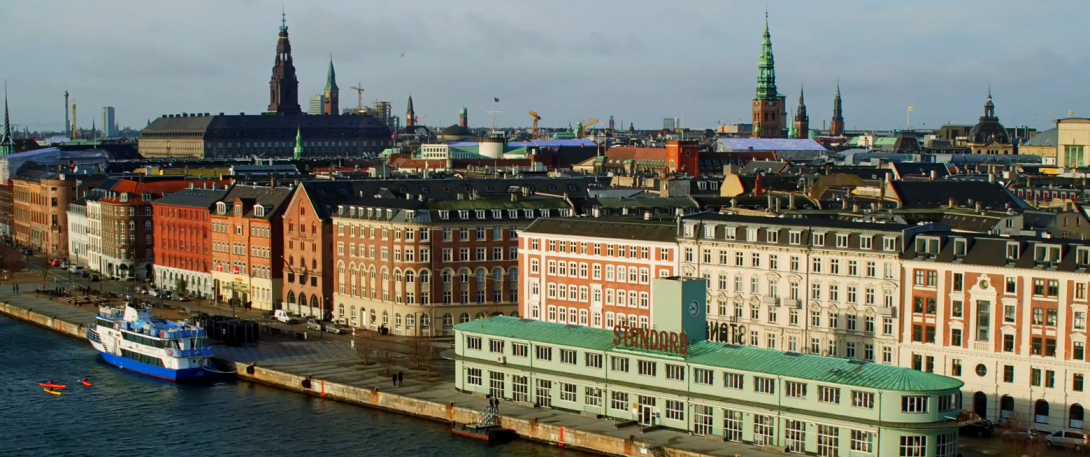
Copenhagen Fashion Week is now in full swing, showing off the latest in sartorial style for an audience of visitors from all over the globe. What better venue for a special screening of X-Ray Fashion, the Fashion4Climate virtual reality project developed by MANND, produced by C4C and Vulcan with the support of Alcantara, and directed by fashion photographer Francesco Carrozzini?
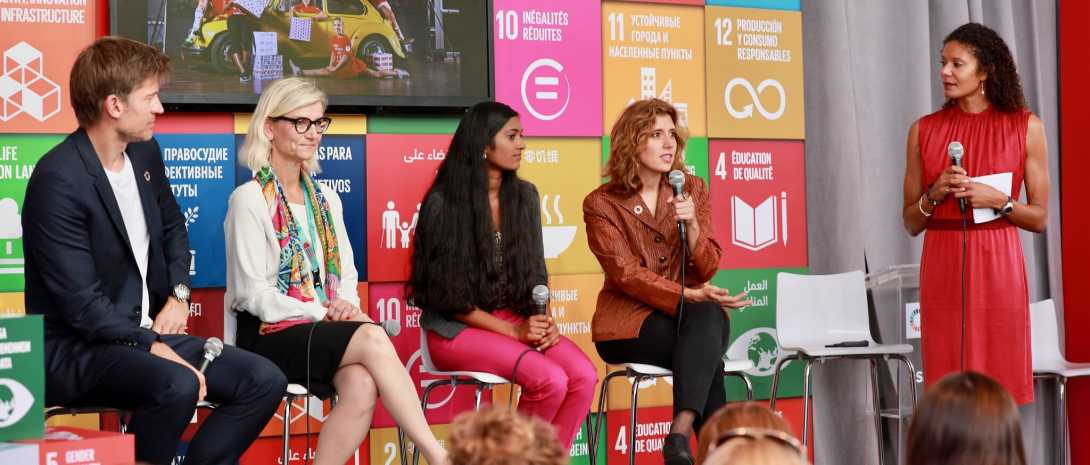
The United Nations’ High-Level Political Forum on Sustainable Development (HLPF for short), which aims to assess global progress on the Sustainable Development Goals and lay out new strategies in response, got underway in New York City this Tuesday and will continue through July 18. The concerns of young people are especially high on the agenda.
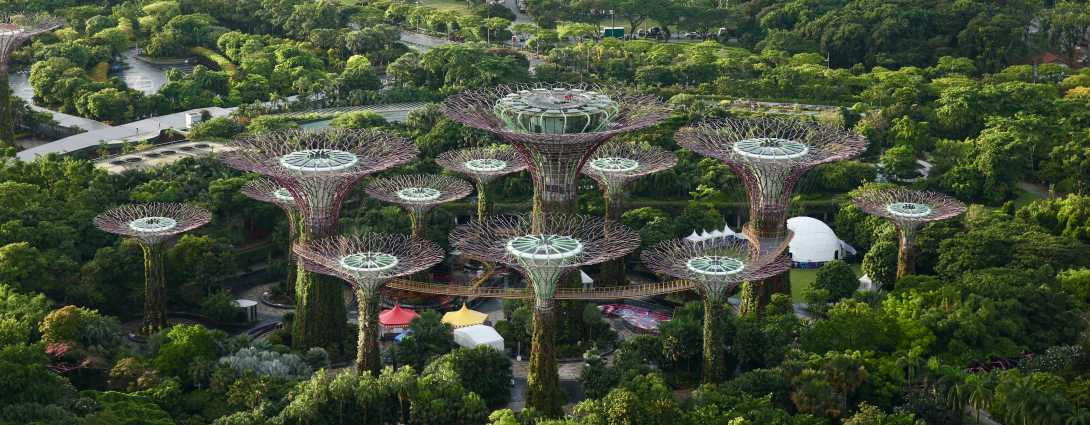
“Do you guys know what a floppy disk is?” One of my senior colleagues asked her younger co-workers over lunch at work recently. Their quizzical looks answered her question.
Understandable. People of my generation do not depend on floppy disks. It is tough for us to appreciate why it was impossible to use the landline and the Internet simultaneously. Memories of our family computer – a bulky deskbound computer that would heat up minutes after we’d switched it on – are tucked in the fringes of our minds.
Perhaps twenty years from now we will be asking similar questions – on our progress in mitigating climate change.
Why Did You Guys Throw Waste Away Without a Second Thought?
In 2039, waste – neither data nor oil – is the new gold. Similar to major oil companies expanding their portfolios by acquiring green energy firms, mining conglomerates are rushing to invest in urban mining. Sewage is sought after as material for syngas, a mixture of hydrogen, carbon monoxide, and carbon dioxide. Syngas can serve as both an immediate source of fuel and an intermediary to other sources of fuel. Moreover, syngas has been proven to be a cleaner source of fuel. And just as how Impossible Burgers started to gain traction twenty years ago, people are embracing the concept of their clothes being made out of recycled plastic.
All of this is thanks to technological advancements and increased economies of scale.
We may have had these ideas twenty years ago in 2019, but the cost of such technology limited us. This is nothing new. Singapore had the idea of recycling water on a mass scale in the seventies. It only materialized thirty years later in 2003, when the technology required was reliable and affordable enough to scale NEWater production.
Given the technological and economic constraints back then, achieving water recycling in thirty years can be considered impressive. Now that we have a deeper recognition of the value of waste, we are taking aggressive steps to make our 2039 economy completely circular.
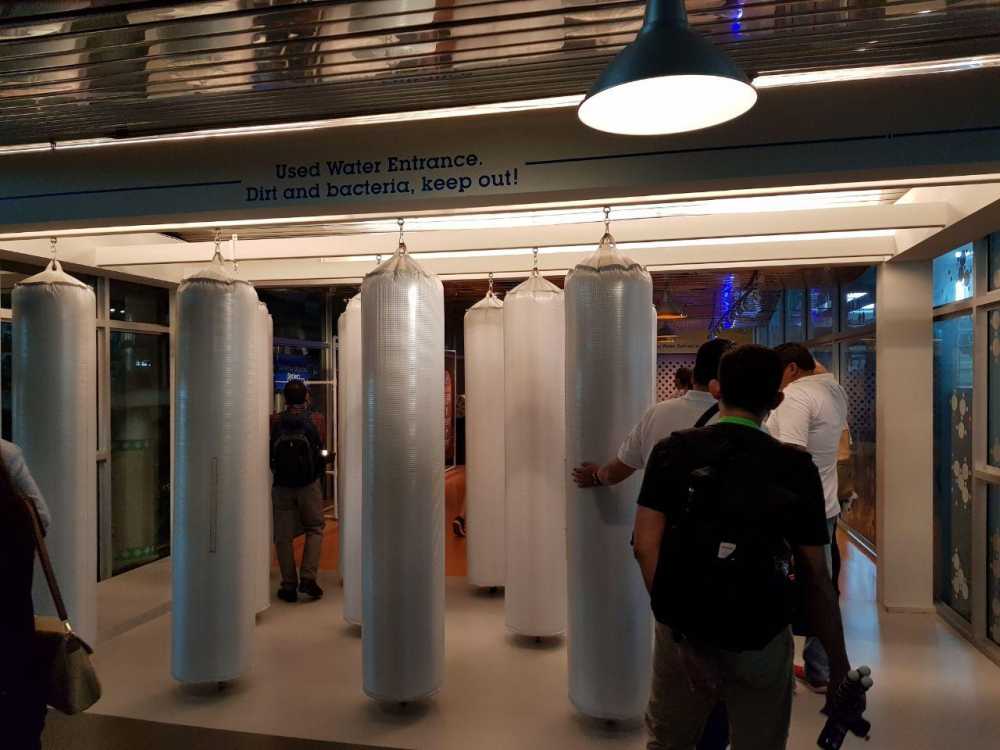
An exhibit simulating microfiltration in water treatment at the NEWater Visitor’s Centre.
Why Weren't Integrated Waste Management Facilities (IWMFs) Commonplace?
Syngas is a highlight product of waste treatment (the exact term is gasification) in IWMFs, one-stop hubs that reincarnate the different types of waste that we produce. Compared to traditional waste management plants, IWMFs are recognized to be more energy efficient and land optimising. Given that syngas is an energy source, integrated waste management facilities double as waste-to-energy facilities.
These are everywhere in 2039. In other words, whatever is flushed down the toilet, whatever leftover food that was thrown away a few hours ago ends up as electricity powering washing machines and refrigerators. In a few hours, not a few days.
IWMFs started out as centralized facilities, aimed at treating waste produced at the city level. Waste citywide was transported across the city to centralized IWMFs in Deep Tunnel Sewage Systems (DTSS), an equivalent of highways for waste. The idea of decentralized IWMFs came later, when stakeholders realized that it costs less to transport waste across a shorter distance and treat waste on a localized scale. Today, decentralized IWMFs are found in every district, and are responsible for generating energy for each district. They can also be found at commercial sites that are known to generate huge amounts of waste, such as shopping centers. While centralized IWMFs are more applicable for industrial purposes today, decentralized IWMFs are more prominent and relevant to our daily lives.
Hence, IWMFs then and now are analogous to first generation IBM computers vs. Macbooks. Both the former and the latter started out as centralized devices, evolving to decentralized, cheaper, ubiquitous and space-optimizing devices along the way.
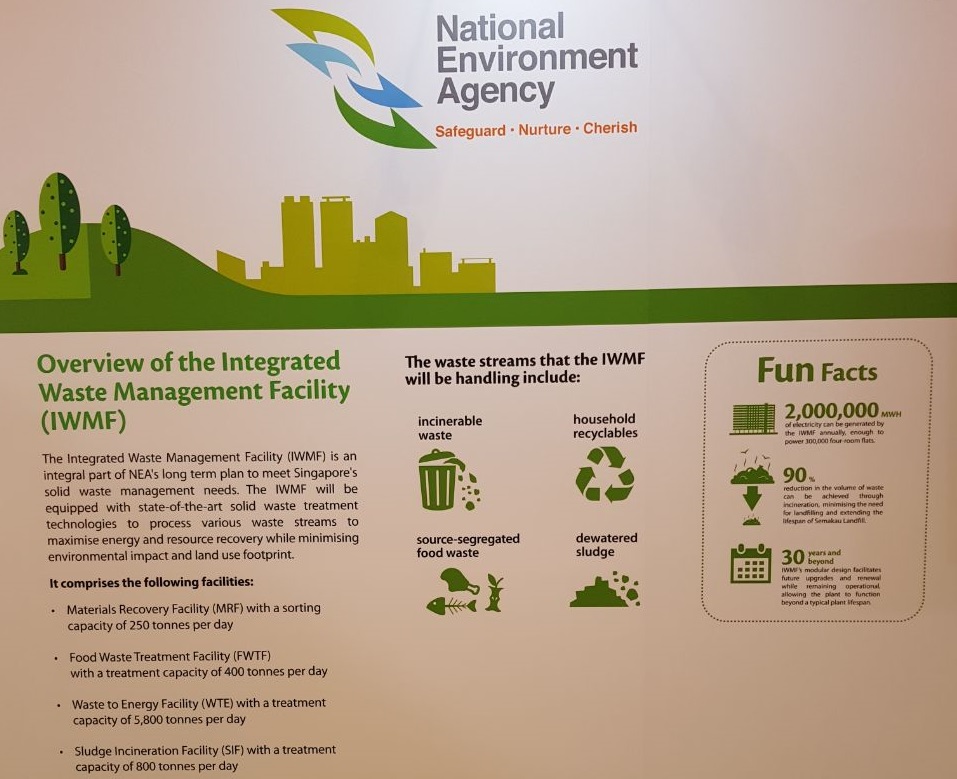
While investment backing and technological advances played key roles, it is important to note that the collection of waste entering IWMFs still needed to undergo some form of sorting before being fully utilized. Considering the sheer amount of waste produced each day, it was more cost-effective to have enforcement in place to drive the public and businesses to sort their waste.
Unfortunately, we were only starting to get serious about waste management in 2019 (it can be troublesome to sort waste, we know). One facet of Singapore’s Zero Waste Masterplan that launched in 2019 mandated that developers of new premises that were expected to be large food-waste generators set aside space for food-waste treatment systems from 2021, and treat such waste on-site from 2024. There were also plans made for campaigns to educate the public on recycling, with enforcement to kick in if necessary.
Meanwhile, we were also starting to experiment with decentralized IWMFs. During the Ecosperity Forum held in 2019, electrical company SP Group signed an agreement with Gardens by the Bay to collaborate on a two-year pilot project that aimed to tap the waste generated within the park and use it to generate the energy needed to run the tourist attraction. Gardens by the Bay was recognized for its sustainability mechanisms, which made it a suitable place to pilot this project.
How Did We Make the Shift to the Cleaner Sources of Energy We Use Today?
We employ a multi-pronged approach. Oil companies are motivated to stay relevant by diversifying their portfolios and investing in green energy. Meanwhile, we decentralize energy production, giving households and businesses the means to produce their own electricity by harnessing greener energy. We are considering encouraging peer to peer (P2P), or even consumer to consumer (C2C) trade of electricity. This is plausible considering the decreasing costs of production of green energy.
During the Innovate4Climate Forum held in Singapore in 2019, Steven Schofield, Senior Adviser on Energy and Climate Policy at Shell remarked that Shell is “not an oil company, but an energy company”. Indeed, Shell had a vision of becoming the world’s “the largest electricity power company in the world in the early 2030s”, as quoted from Maarten Wetselaar, director of Shell’s integrated gas and new-energies unit, in a televised interview with Bloomberg in March 2019.
In addition, Karen Muhksyan, Head of the Department for Territorial Development and Environmental Issues of Armenia, shared in 2019 that the Armenian government was using a loan program to encourage consumers to install solar panels so they could generate their own electricity. Moreover, consumers could sell surplus electricity to the Electric Networks of Armenia, a state-managed electrical company.
When the big players act, that’s the time for smaller stakeholders to take a leaf out of their books before they lose relevance in the market. To all the businesses in 2019, you know what to do.
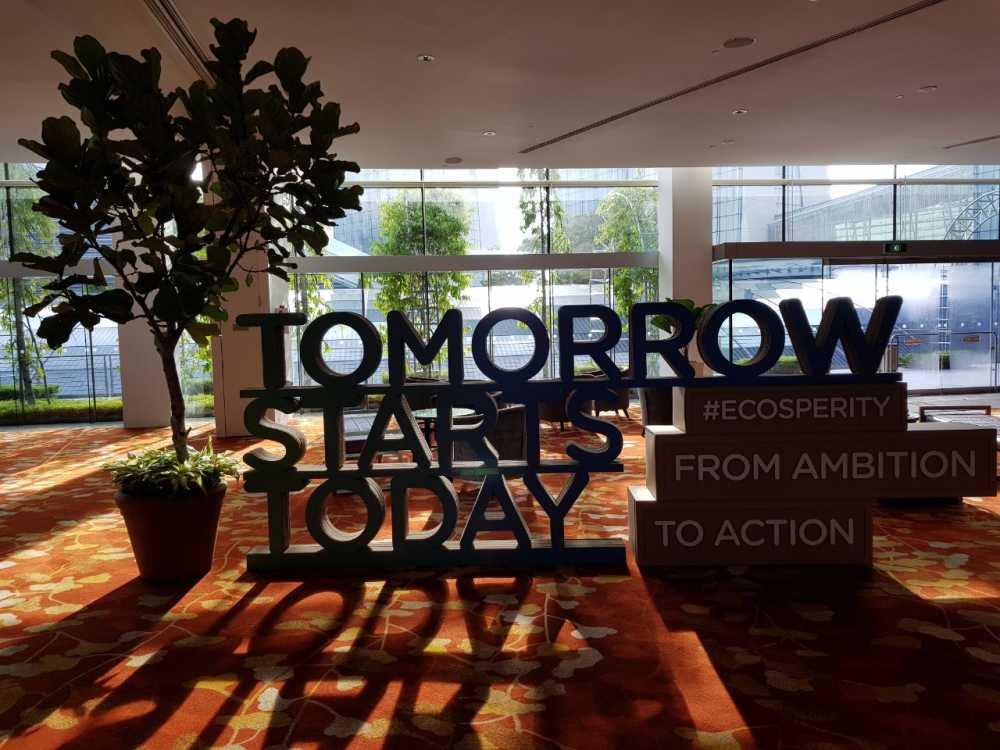
The Final Word: Back to 2019
And that is something I look forward to.
Joyce Gao, reporting from the #YouthTakeover team at Innovate4Climate in Singapore. Joyce will soon be entering her Junior year as a student at the Wee Kim Wee School of Communication and Information under Nanyang Technological University in Singapore.

Following a successful launch last year, TRANSITION Forum returns to Monaco on 26 and 27 June to accelerate the transition to a low-carbon future through investment and collaborative climate action. Under the High Patronage of His Serene Highness Prince Albert II, TRANSITION mobilizes a multi-disciplinary community of global business leaders, policymakers, investors, innovators, scientists and members of civil society to find concrete solutions for humans to prosper while preserving our planet.
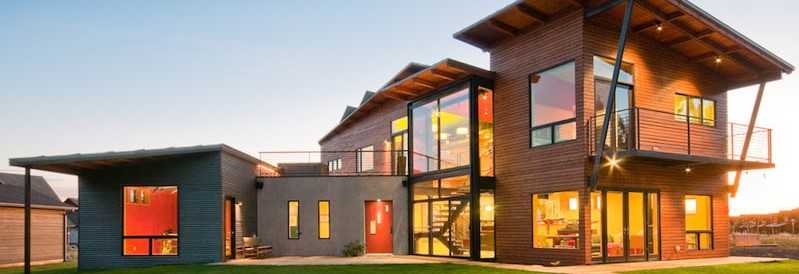
Sizing up the (Worthwhile) Challenge of Green Living
Green living entails more than just lifestyle adjustment; it is a mindset, and until you believe in what you are doing, you’ll never be able to fully follow through. Many decry the sacrifices or inconveniences associated with green living, but if you genuinely believe the lifestyle is the correct one for you, these sacrifices will not feel like sacrifices, and these inconveniences likewise.
Cultivating a green home is not easy, but once you have committed, you will reap many rewards—including significant financial savings as well as the hard-won feeling that you are doing your part to secure a sustainable future for your family and your planet.
Selecting a Site for Your Green Home
When deciding on a site for a green home, you will need to put in some research. If possible, choosing a home in close communion with the natural world can be a great first step. Properties with ample shade trees can make cutting back on heating and cooling costs easy, and properties with gardening space offer many exciting opportunities.
Keeping your roof out of the shade, however, will enable you to implement solar panels and pivot away from electricity from the power company. And if you’re interested in any form of wind power, make sure you select an area with favorable geography and frequently high wind velocity.
To cultivate your own fruits and veggies, you’ll need fertile ground. Determining the suitability of any given property to long-term green gardening can be trickier than you might think, so bringing an expert adviser aboard is a wise move.
You’ll also need to think about where you want your water to come from. Taking advantage of natural fountains and boreholes can be a viable strategy if you put in the time to pinpoint locations with readily accessible water.
Last but not least, try not to move too far from your workplace, especially if you travel to and from work by car. The pollution that comes with lengthy auto commutes every day will run counter to all the good you’re doing at home.
Building a Strong Foundation
When deciding on the foundation for a green home, bear in mind your heat retention needs. Materials like plywood and aluminum are slightly more expensive than others, but they can pay off in the long run in terms of saving you costs on heating.
Judicious use of precast concrete can prevent rainwater from breaching the house and can help guide rainwater on the property to a central location where you can make use of it. Insulating your basement against moisture is also a key step, as the costs of dealing with mold growth can be very dear.
What Materials Should You Consider for Your Roof and Walls?
If you’re not overly worried about your home getting too cold, recycled steel is a sturdy and modern choice that will protect the structure against strong winds and other forces no problem. Plant-based polyurethane foam can be used to help insulate the structure against the chill of winter.
Precast concrete is a tried and true option that is somewhat more eco-friendly than non-precast. As with recycled steel, you’ll find yourself paying extra for the eco-friendliness, but if you can manage the costs it will pay off in the long run.
Bamboo is a natural material with extremely high tensile strength and a bold look to boot. It is well-suited to windows—key for ventilating your green home—and does not require too much maintenance (though do be sure to have any sustainable woods in your home treated regularly to avoid pest issues).

How Should You Use Your Rooftop Space?
The roof is an exciting place in a green home, offering many sustainable living options to homeowners.
If you ensure it gets regular exposure to direct sunlight, your roof can be a great place for a vegetable garden. It is also the ideal spot for solar panels, which can take in solar energy during the day that will be available to you at night.
Speaking of the sun, bear in mind that darker-colored roofs will retain much more heat than light-colored roofs. Bear the location of your home in mind when choosing a color to save on heating/cooling expenditures.
Installing a sunroof that can admit sun directly into the home when desired is another fine way to regulate the temperature in your green residence.
Living Sustainably
Getting your green home set up is only half the battle: green living is a mindset, remember, and you must hold on to this mindset once your new home is ready for action if you want the project to be a success.
If you chose the property with solar power and/or wind power in mind, be sure to follow through on implementing these technologies once you move in to capitalize fully on the advantages of the house. Raise as much of your own food as you can through gardening. You can use the leftover water from bathtubs and showers to help your plants grow, as well as collected rainwater.
If you’ve done all the hard work needed to create an eco-friendly home, you should have no problem seeking out Energy Star-certified sustainable appliances and LED lighting fixtures (where affordable). And be sure to compost and recycle what you can to cut back on waste!
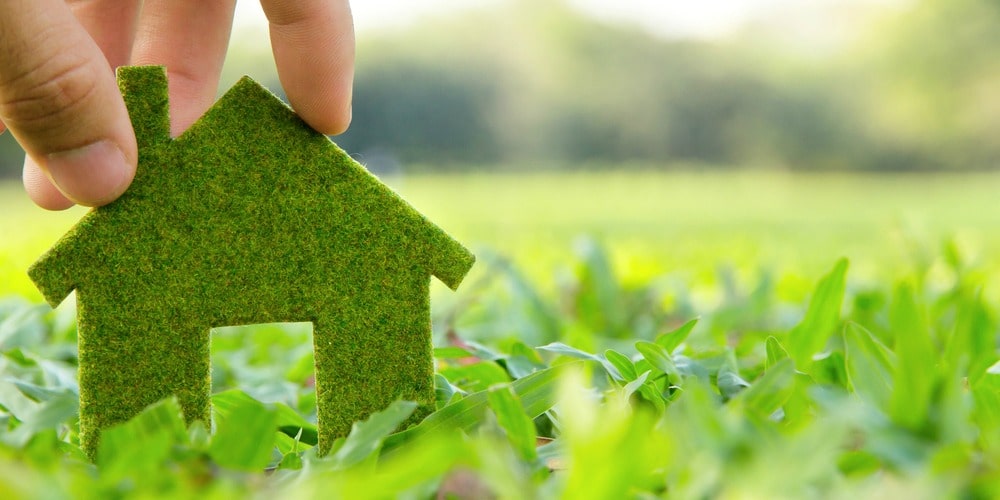
Is Going Green Worth It?
The answer to this all depends on you, your beliefs, and your financial situation. If you believe passionately in sustainable living and looking out for the environment, think you can maintain this mentality moving forward, and have the money to create a green home from the ground up, why not?
It’s worth bearing in mind too that while this article details ways in which you can sculpt a green home from ground zero, the many tips and suggestions included here can also be applied in isolation if you lack the means or motivation to overhaul your current housing situation. Solar panels, rooftop gardens, rainwater management, etc. can all make for more sustainable living, regardless of whether you optimize every last thing.
At the end of the day, it’s up to you to decide how radical a change your looking for, and to make that change happen in the interest of the health of Mother Earth.
Images taken from Amanda Brown's original article.

Looking to take your first steps toward a more eco-friendly life? For most lifestyle changes, you really have to begin at home, and going green is no exception. Before you can become an eco-warrior in other aspects of your life, you must first gain control of your environmental footprint where you live. Here’s how to get started.
Save Water Wherever You Can
It costs you nothing to practice water conservation — in fact, it will save you money in the long run. You may not think that saving a gallon or so here and there helps, but it adds up. Take showers instead of baths (10 to 25 gallons vs. 70-plus). Save the water you use to cook pasta and potatoes and water your plants with it, and don’t leave the faucet running while you’re brushing your teeth. These are simple steps, but don’t be afraid to get creative!
Swap Out Energy-Hogging Appliances
There’s no reason that your fridge, dishwasher, washer/dryer combo, and HVAC unit should be anything less than truly energy-efficient. Not only is this better for the environment, but it will also save your family money. Replacing an old washing machine with a newer, energy-efficient model can save a family of four $100-plus a year, for example. Angie’s List also notes that your city/local government might offer rebates for buying energy-efficient appliances.
While you’re doing this, don’t forget to improve efficiency all around your home. For example, insulate your windows, replace your light bulbs with more efficient models, and seal your leaky faucets. These little fixes make a big difference.

Swap Out Your Cleaners
Most traditional household cleaning products aren’t that eco-friendly. Regular paper towels, kitchen sponges, and cleaning chemicals aren’t always biodegradable, can be toxic to wildlife/plant population, and may produce volatile organic compounds that can harm your family and the environment. Swapping these out for more environmentally sound options is an easy fix. Beware of generic “eco-friendly” labeling, however, as it might not be legitimate. Look specifically for packaging that is recyclable or biodegradable, and know what chemical compounds to avoid (check here for more on that).
Make Reusing Containers a Habit
Most of what resides in our nation’s landfills is plastic, and the average homeowner’s biggest plastic footprint comes from food, water, and personal hygiene containers. You and your family should commit to reusables. Simply purchasing reusable water bottles can save over 1,000 plastic water bottles and $2,000 per year. Save those yogurt and cottage cheese containers and repurpose them. By getting creative, you can make a big step toward meaningful change.
Leave Your Car in the Garage
When you think about it in terms of the environment, your wallet, and your waistline, your car is the worst way to travel anywhere. Any form of transportation — save a plane or boat — is better for the environment. This means you should walk as much as you can. You should bike as much as you can, and you should certainly use public transportation if possible. Not only will this help you make your family’s footprint greener, but it will also help you get more exercise and save you money in the short and long term.
The great thing about making your life at home more eco-friendly is that it’s not just great for Mother Earth — there are plenty of selfish reasons to do it too. It can improve the overall health of you and your family. It will make you feel accomplished. And, maybe above all else, it is cheaper in the long run. Do it for you. Do it for the environment. Just do it, period.
Jennifer McGregor is a pre-med student, who loves providing reliable health and medical resources for PublicHealthLibrary.org users. She knows how difficult it can be to sift through the mountains of health-related information on the web. She co-created the site with a friend as a way to push reputable information on health topics to the forefront, making them easier and quicker to find.
Plant photo by Matias Difabio on Unsplash. Banner and thumbnail courtesy of Dorcha.


